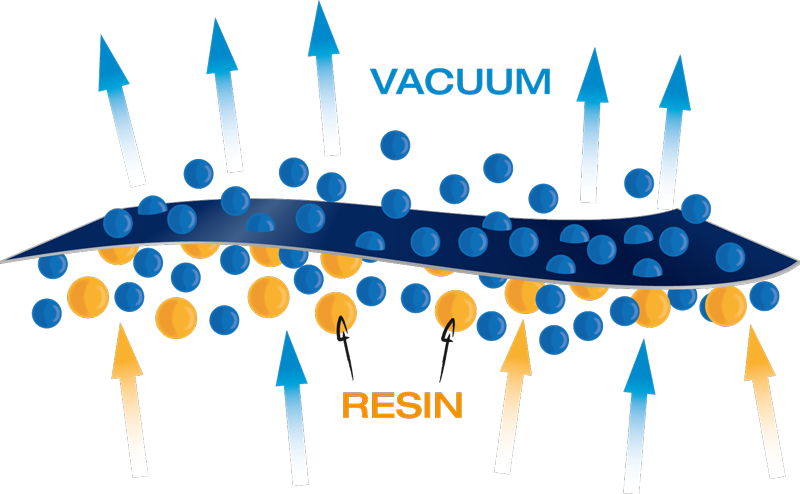|
Improved flow front management
In all conventional
vacuum infiltration processes, the difficulty in successfully
infiltrating the component lies in determining, or predicting,
the flow fronts in order to avoid undesirable areas of
occluded air (‚dry spots‘). If the vacuum then also has to be
reduced due to the risk of matrix boiling, it becomes almost
impossible to eliminate these imperfections. The reduced
vacuum also causes substantial fluctuation in the fibre volume
content and material thickness, and lAirbus to greater
porosity in the components.
The matrix´s flow behaviour is
much more consistent in the Vacuum Assisted Process (VAP®)
process because of the uniform vacuum. The low pressure’s
extensive effect on all of the membrane system´s contact
surfaces reliably removes dry spots, even after infiltration,
without the vacuum having to be reduced.
How the semipermeable VAP® membrane system works

Semi-permeable VAP®
membrane systems from
Trans-Textil are full of tiny pores. Under vacuum conditions,
small molecules of trapped air and gas can be reliably
removed, while the large-molecule resin stays stable in the
mould.
In the VAP® membrane system, barrier layers are
connected (laminated) to a textile substrate. By the optimal
combination of components and processing technologies during
manufacture, it is possible to accurately control the
essential process parameters: air permeability and the resin
barrier.
Trans-Textil´s patented
quality-assured VAP® membrane systems have been tested for
various different resin types and process variants, and the
company is continuously developing the technology in close
cooperation with
Airbus.
VAP® advantages in the production process:
● High process reliability,
consistently stable and controlled results
● Air and gas removal during and after
infiltration
● Simple process control
● Achievement of an exact and constant
fibre volume content
● Production of complex 3-dimensional
shapes
● Fast infiltration process through
higher vacuum = shorter cycle times
● Uniform flow rates in the resin
● Low initial investment: possibility
to use tools that are already available
● Improved worker protection and low
emissions due to closed process
● VAP® membrane systems by
Trans-Textil tested and approved for different resins and
processes
|

